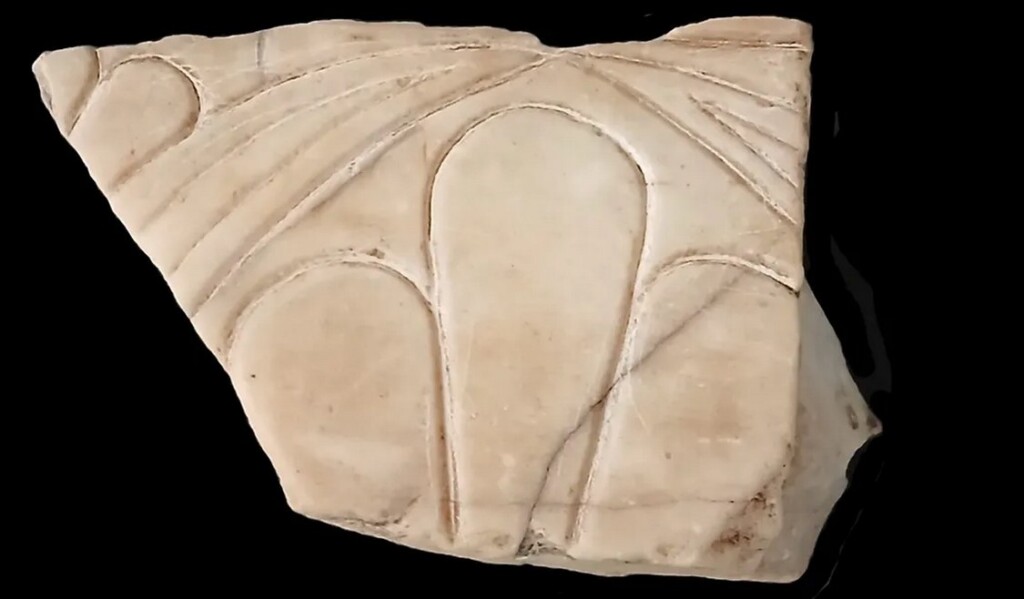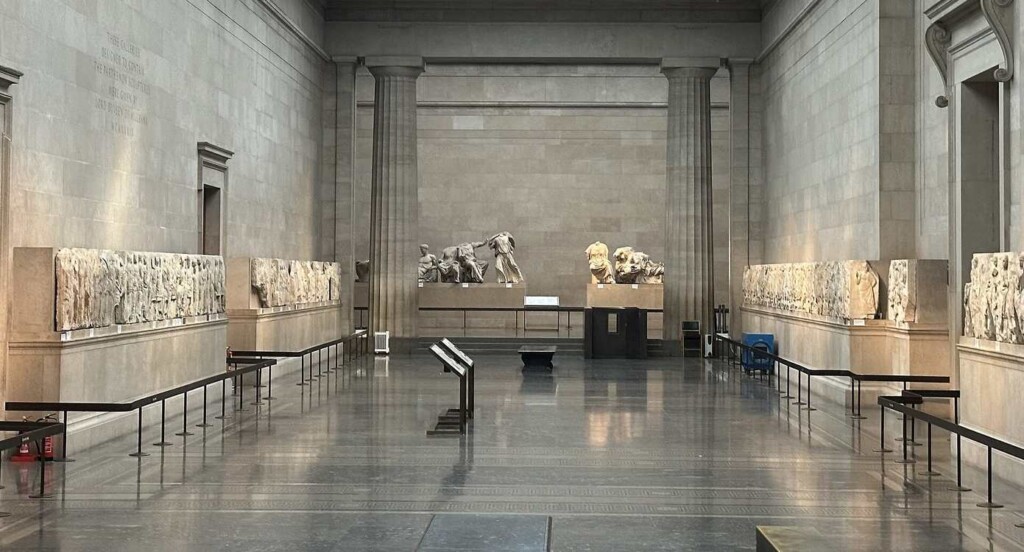
In 2022, an elder Chilean man walked into the Greek embassy in Santiago on a mission: to turn himself in.
Not that 77-year-old Enrico Tosti-Croce had done anything wrong, but rather he was putting a small family matter to rest.
In the 1930s, a young Italian submariner visited Athens with the Italian Navy and paid a visit to the legendary Parthenon, a temple built to honor the goddess Athena atop the Acropolis of Athens in the 5th century BCE.
There, he found a small piece of marble statuary decorated with a lotus flower, and with the idea of cultural patrimony still far off beyond the World War he would eventually fight in, Gaetano Tosti-Croce took the piece for himself.
After the war, when he fled/immigrated to Chile, he would show it off to anyone who visited his home, a habit his son began to replicate.
“When someone came to my house for the first time, I would show them that stone and say, ‘This is from the Parthenon,’” Enrico told the Art Newspaper. “Some believed me; others didn’t.”
He never thought much of his father’s illicit souvenir, until in 2022 he saw a report on the news about Greece’s decades-long struggle to reclaim the Parthenon marbles from the British Museum, where substantial evidence suggests they were taken in a hasty act of looting and plunder by the British ambassador to the Ottoman Empire, Lord Elgin, in the 19th century.
Inspired by the quest for repatriating cultural heritage lost during dark days, Tosti-Croce got up, and emailed the Greek embassy’s deputy chief of mission, Theodosios Theos.
Theos forwarded the email to the Chief of the Greek Archaeological Service, Olympia Vikatou, who then responded with thanks and salutations to the Chilean, as well as with a fascinating story behind the seemingly simple marble piece still in his possession.

Vikatou and colleagues believed it made up part of a basin or gutter on the Hekatompedon—the Acropolis’ oldest monumental temple, built before the Parthenon perhaps as early as 570 BCE.
According to El País, reporting on the story, Vikatou noted that the temple’s gutter was decorated with alternating oval palmettes and lotus flowers.
GREEK STORIES: Visitors Gaze on Parthenon Free of Scaffolding for the First Time in 200 Years
Theos praised the “honor and courage” of the Chilean citizen, and hoped his virtue can shine as an example to anyone who may have also come into possession of plundered Greek antiquities.
During the Roman period, and all of the Middle Ages, Greece had somewhat autonomous control ensconced within imperial regimes, alternating between Italy and Byzantium. By the Renaissance, it had been taken by Ottoman Turks, and there it remained as a colonial possession until 1830, when with the help of Western European powers, the rebellious Greeks threw off the shackles of domination.
MORE STORIES LIKE THIS: Poland Secures Return of Gorgeous Artwork from Danish Auction Stolen During World War II
The decades that followed—right up until the creation of the Third Hellenic Republic in 1974, were tumultuous, and Greece would have experienced cultural losses likely far beyond just the Elgin Marbles.
The lotus fragment of Tosti-Croce has already been returned to Greece and was handed over to the Ephorate of Antiquities of the City of Athens, according to a statement.
SHARE This Man’s Honest Actions In Writing A Wrong From The Past…


